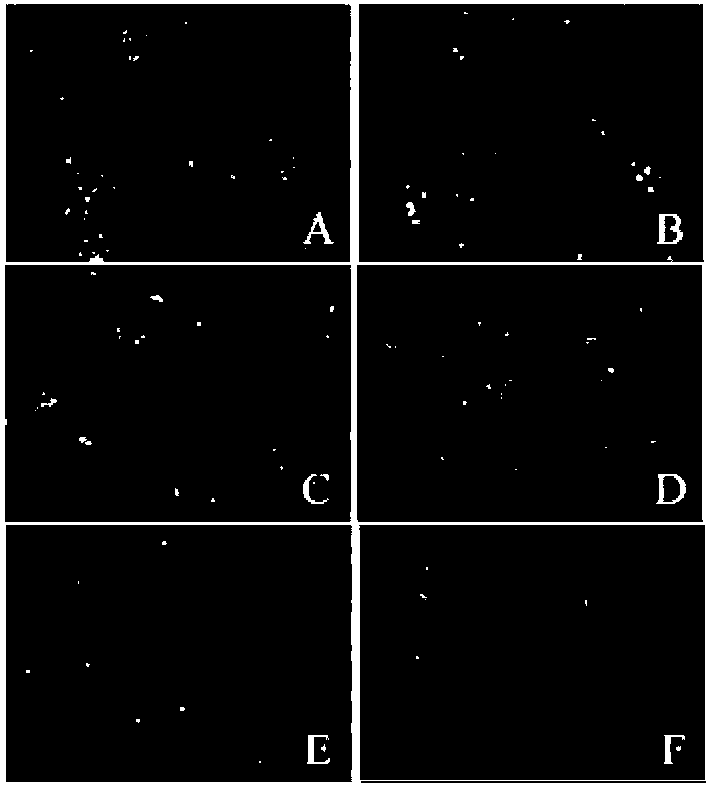Construction and application of recombinant peste des petits ruminants virus expressing fused exogenous epitope N protein
A technology of Peste des petits ruminants and viruses, applied in antiviral agents, viruses/phages, medical preparations containing active ingredients, etc., can solve the problem of inability to distinguish naturally infected animals from immunized animals
- Summary
- Abstract
- Description
- Claims
- Application Information
AI Technical Summary
Problems solved by technology
Method used
Image
Examples
Embodiment 1
[0033] Example 1. Construction of recombinant virus fused with foreign epitope
[0034] The plasmid pCAGGS-N was used as a template, and Epitope-F and HA-R were used as primers for PCR amplification. The PCR product was double digested with SacI and KpnI and cloned into pCAGGS between the SacI and KpnI restriction sites to construct pCAGGS- N HA Plasmid and sequenced; using plasmid pCAGGS-N as template, Epitope-F and FLAG-R as primers for PCR amplification, the PCR product was double digested with SacI and KpnI and then cloned into pCAGGS between the SacI and KpnI restriction sites , Construct pCAGGS-N FLAG Plasmid and sequenced; using pCAGGS-N as template, Epitope-F and 5B19-R1 as primers for PCR amplification, the PCR product was digested with SacI and cloned into pBlueScrip II KS(+) vector (purchased from Stratagene) Between SacI and EcoR V sites, construct pBlue-5B19 1 Plasmid, then pBlue-5B19 1 The plasmid was used as a template, and Epitope-F and 5B19-R2 were used as prime...
Embodiment 2
[0035] Example 2: Rescue of recombinant virus expressing fusion foreign epitope N protein
[0036] The infectious clone plasmid pNg75 / 1-GFP / N HA Vero cells were co-transfected with the helper plasmids pCAGGS-N, pCAGGS-P, and pCAGGS-L to rescue the virus. The specific test method refers to the literature [6], and the rescued virus is named rPPRV / GFP / N HA (The coding nucleic acid sequence is shown at positions 1116-17936 in SEQ ID No. 1). The same method rescued recombinant virus rPPRV / GFP / N FLAG (The coding nucleic acid sequence is shown in position 1116-17933 in SEQ ID No. 2) and rPPRV / GFP / N 5B19 (The coding nucleic acid sequence is shown at positions 1116-17957 in SEQ ID No. 3). In order to identify the effects of three foreign epitopes on the function of N protein, the virus rescue efficiency was used to verify whether the function of N protein was affected. The expression of GFP was observed 4-6 days after virus rescue, the result ( figure 2 ) Shows: First, use the helper pl...
Embodiment 3
[0037] Example 3. RT-PCR identification of recombinant virus
[0038] The infectious clone plasmid pNg75 / 1-GFP / N HA Co-transfected Vero cells with the helper plasmids pCAGGS-N, pCAGGS-P, and pCAGGS-L to rescue the virus. Refer to the literature for specific test methods [6]. Rescue the recombinant virus rPPRV / GFP / N fused with the HA epitope HA . In order to determine whether the HA epitope was successfully introduced into the carboxyl end of the N gene, the harvested rPPRV / GFP / N HA RNA was extracted from virus liquid and rPPRV / GFP virus liquid, and RT-PCR was performed with NP-rtpcr-F and NP-rtpcr-R as primers. The amplified fragment was the same size as the fragment amplified by RT-PCR of the control rPPRV / GFP with the same primers. Further sequencing analysis showed that the HA epitope had been successful at the carboxyl end of the N protein. The same method detected that FLAG and 5B19 epitopes were successfully introduced into the carboxyl end of the N protein.
PUM
 Login to View More
Login to View More Abstract
Description
Claims
Application Information
 Login to View More
Login to View More - R&D
- Intellectual Property
- Life Sciences
- Materials
- Tech Scout
- Unparalleled Data Quality
- Higher Quality Content
- 60% Fewer Hallucinations
Browse by: Latest US Patents, China's latest patents, Technical Efficacy Thesaurus, Application Domain, Technology Topic, Popular Technical Reports.
© 2025 PatSnap. All rights reserved.Legal|Privacy policy|Modern Slavery Act Transparency Statement|Sitemap|About US| Contact US: help@patsnap.com



